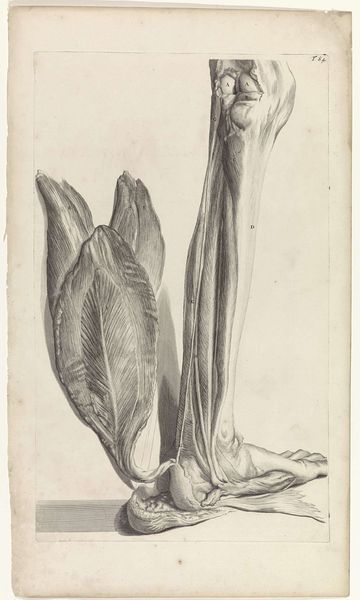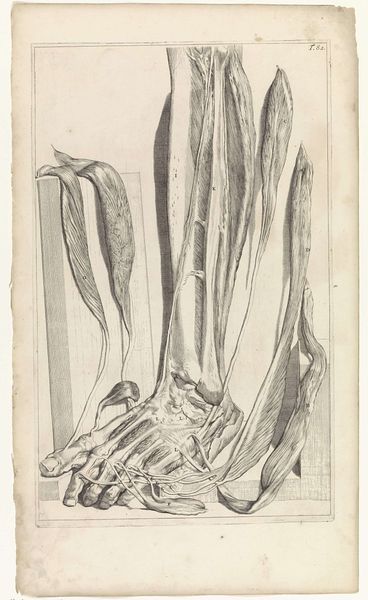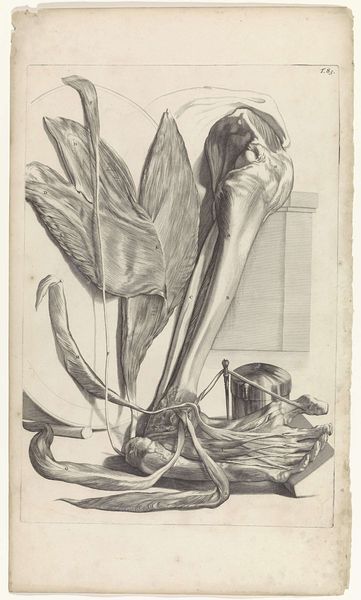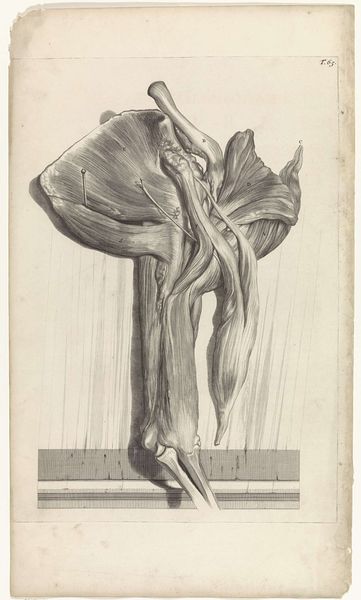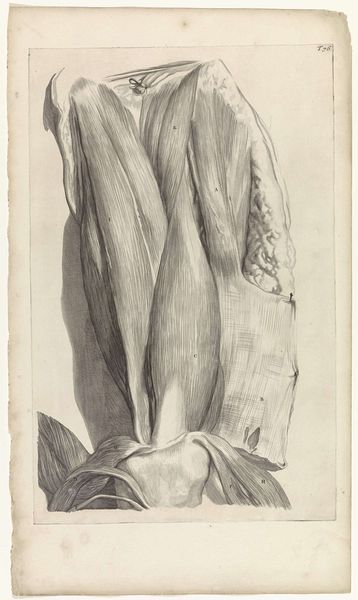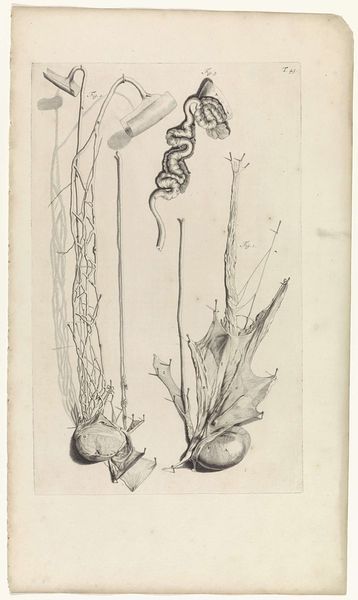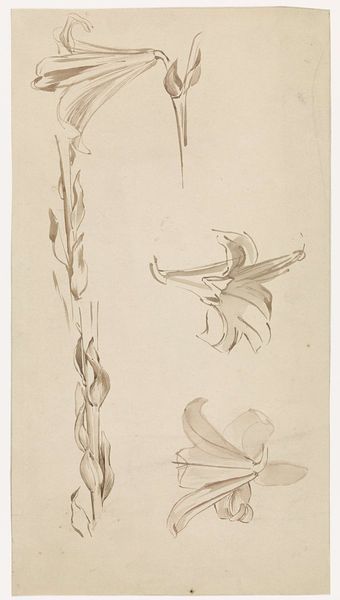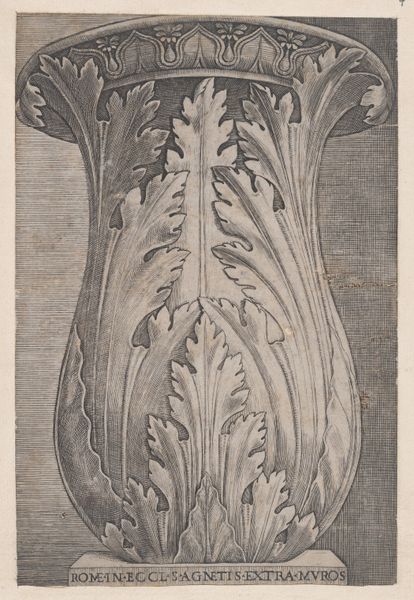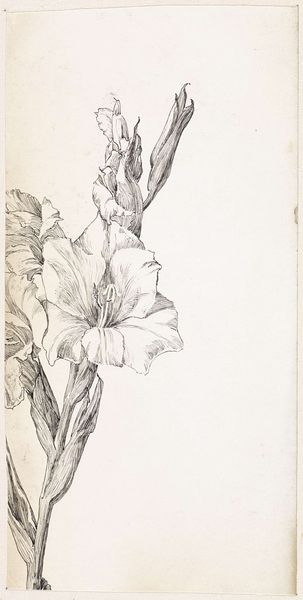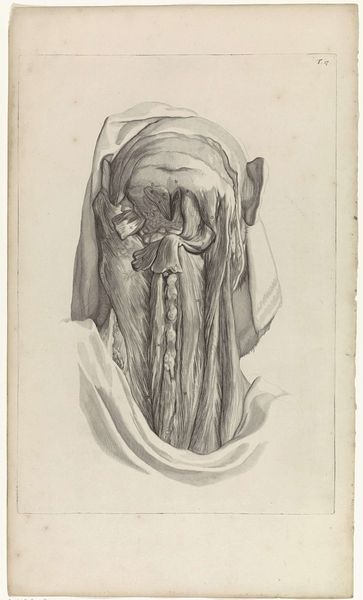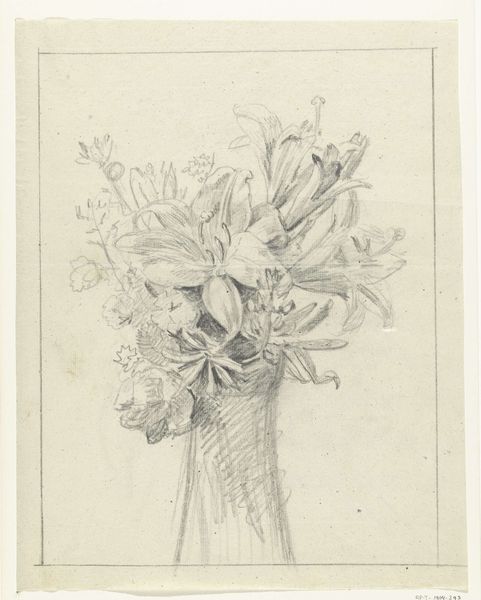
drawing, graphite
#
drawing
#
baroque
#
figuration
#
pencil drawing
#
graphite
#
history-painting
Dimensions: width 327 mm, height 482 mm
Copyright: Rijks Museum: Open Domain
Pieter van Gunst made this anatomical study of the muscles of a left thigh at the turn of the 18th century. In the Dutch Republic, medicine was advancing rapidly. This print, while ostensibly scientific, also served a social function. Anatomical theaters were popular attractions where the educated public could witness dissections. Prints like this one helped disseminate knowledge, but also reinforced a cultural fascination with the inner workings of the human body. Consider how the artist meticulously renders each muscle fiber, transforming a potentially gruesome subject into an object of aesthetic contemplation. The lettering indicates the rise of institutions of science and learning. Close study of it reveals much about the prevailing attitudes toward science, medicine, and the body in the Dutch Golden Age. Accessing medical texts and scientific papers from that time could enrich our understanding of this image.
Comments
No comments
Be the first to comment and join the conversation on the ultimate creative platform.
